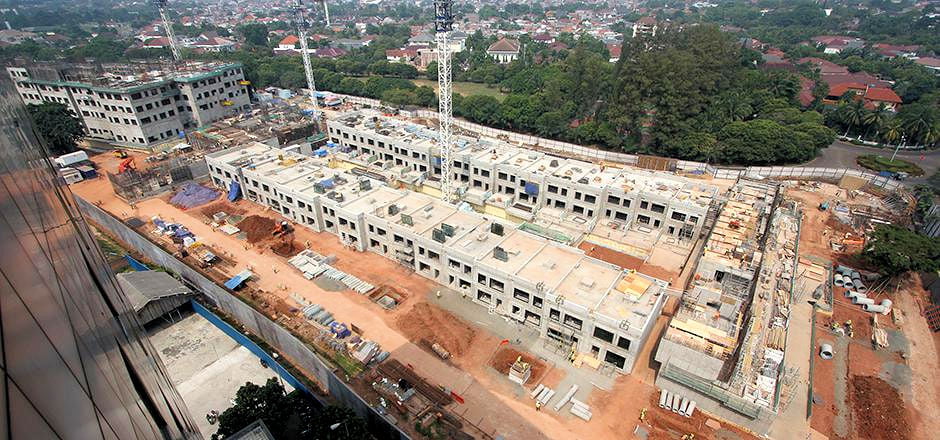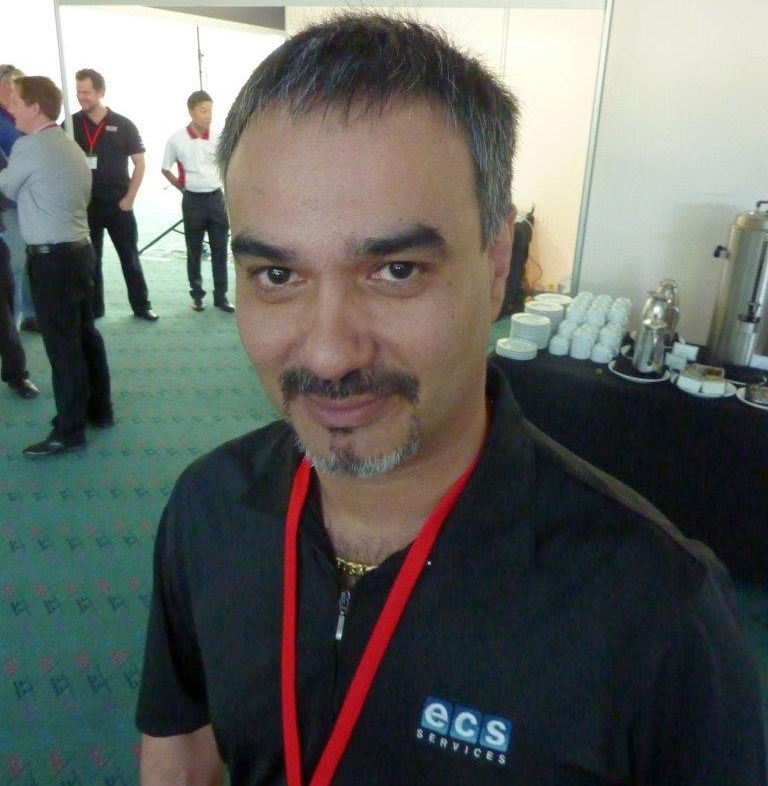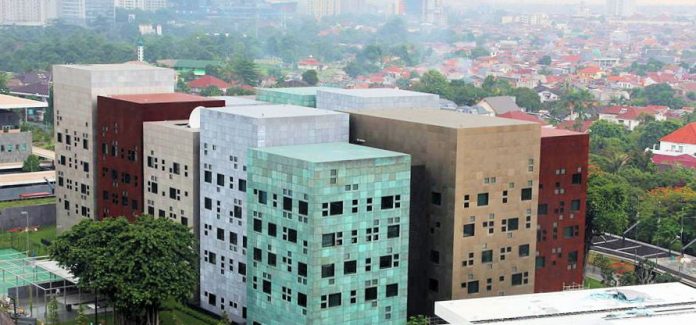AUSTRALIA’S new embassy complex in Jakarta, Indonesia, is currently being filled by staff of the Australian diplomatic missions to the Republic of Indonesia and to the Association of South East Asian Nations (ASEAN).
Occupying a 40,500 square metre site with a gross floor area of 50,106 square metres, Australia's largest and most secure embassy in the world provides office facilities for 551 employees – Australian and Indonesian – representing 12 government agencies and was built at a cost of $A415 million. The complex includes 32 four-bedroom apartments, and extensive recreational facilities including club-room, a swimming pool, 2 tennis courts and a multi-purpose sports court. While the Australian Ambassador to Indonesia, Paul Grigson, retains the official residency in Menteng, the prestigious new residency within the complex will be home to Australia’s separate Ambassador to ASEAN, Simon Merrifield.
The new embassy will resume its central role for Australian activities in Jakarta, particularly hosting meetings and social functions that were suspended after the deadly terrorist bombing of its premises in 2004. The old Australian embassy in Jakarta was badly damaged in a suicide bombing that is generally considered the responsibility of Al Qaeda-affiliated Islamic extremist group, Jemaah Islamiyah. On September 9 2004, a 1000kg car bomb detonated at the embassy gates killing 9 people, including the suicide bomber, and wounding more than 150.

Smoke rises from the Australian Embassy in Jakarta in 2004
Australian integrator, ECS Services, was selected to provide the electronic security systems for the new embassy and 15-20 technicians undertook installation of the security systems. While exact detail of what’s being provided in the way of electrical work and electronic security solutions isn’t available, the original DFAT submission to the Parliamentary Standing Committee back in 2009 provides a general scope of works. The requirements are comprehensive. For a start, electrical services, including electronic security systems, must comply with BCA and appropriate Australian Standards. At a core comms level there’s to be an integrated telephone and data communications backbone and horizontal cabling system.
There’s to be a power supply infrastructure connected to the existing city system, including dual new substation(s) with independent connections to the city grid. The main electrical switchboards complete with surge protection will be strategically located on the site. Lightning protection will be provided to cover all the buildings on the site as appropriate. Metering facilities are designed so that local authorities are not required to enter restricted areas.
Standby power generation based on diesel generator sets is to be integrated with the electrical supply to provide power in the event of mains failure. The underground fuel storage capacity servicing the generators will be sized for a 7-day consumption at 100 per cent load for 24 hours per day continuous operation. UPS provided to essential lighting and power as appropriate. All essential service systems such as lift, fire hydrant hose reel pump, and sprinkler pump will be connected to back-up power supplies.

Early in the build.
There’s to be a combined emergency warning and intercommunication system (EWIS) public address system allowing audio communication to all areas of the embassy buildings. Emergency lighting will be independent of the general lighting fixtures and shall incorporate integral battery and charger. Exit lighting is independent battery backup type and based on LED technology. External lighting will be provided for security and access purposes including maintenance of CCTV coverage.
Security measures for the project follow the principles of defence in depth which utilize layers of passive and active security measures to cocoon the more secure areas. The following summarises these security measures. Compound grounds will be secured by monitored perimeter walls with controlled guardhouse access points on the street frontages, with landscaping restricted to allow clear lines of sight.
Public and official building access is segregated. Automated perimeter lighting is provided that may include both twilight and movement detection activation. Appropriate materials, fixtures, hardware and fittings are used for the building shells. Electronic security elements include access control to allocated doors, intruder detection, CCTV cameras cover all portions of the embassy grounds with these and other systems monitored and managed from a manned security control room.
The fire system design responds to the requirements of the BCA and with the specialist requirements for a chancery building. The fire safety system adopted for the building incorporates fire detection and alarm systems, sprinkler protection, hydrants and hose reels, and illumination of building egress and also be in accordance with any fire engineered approach.
Fire detection is achieved by the installation of smoke alarms and heat detectors connected to a main fire indicator panel, with battery back-up, and a mimic panel at the guard post incorporating automatic communication with the embassy duty officer. An audible alarm communication system to alert occupants is installed throughout the buildings. Fire suppression is handled by an automatic sprinkler system, the careful selection of retardant materials and strategic location of extinguishers, hydrants and hose reels. Safe egress from the building is ensured by compliance with BCA.

Raj Masson, ECS Services
The new embassy is also designed to be environmentally friendly. Energy consumption is reduced with the use of lightly insulated facades and sophisticated ventilation systems. Site stormwater will be managed through extensive landscaping, green roof technology and an underground water retention system. Rainwater harvesting, sewerage recycling and low-flow water fixtures will help conserve water.
At the time of winning the project, ECS Services managing director, Raj Masson, said while he was not able to comment on any of the security systems being installed at the site, the embassy is state-of-the-art.
“The embassy is great design – a lot of thought has gone into it. From our perspective it’s a monster of a task. It’s interesting and it’s very demanding at multiple levels – technically and in terms of the work environment.”








